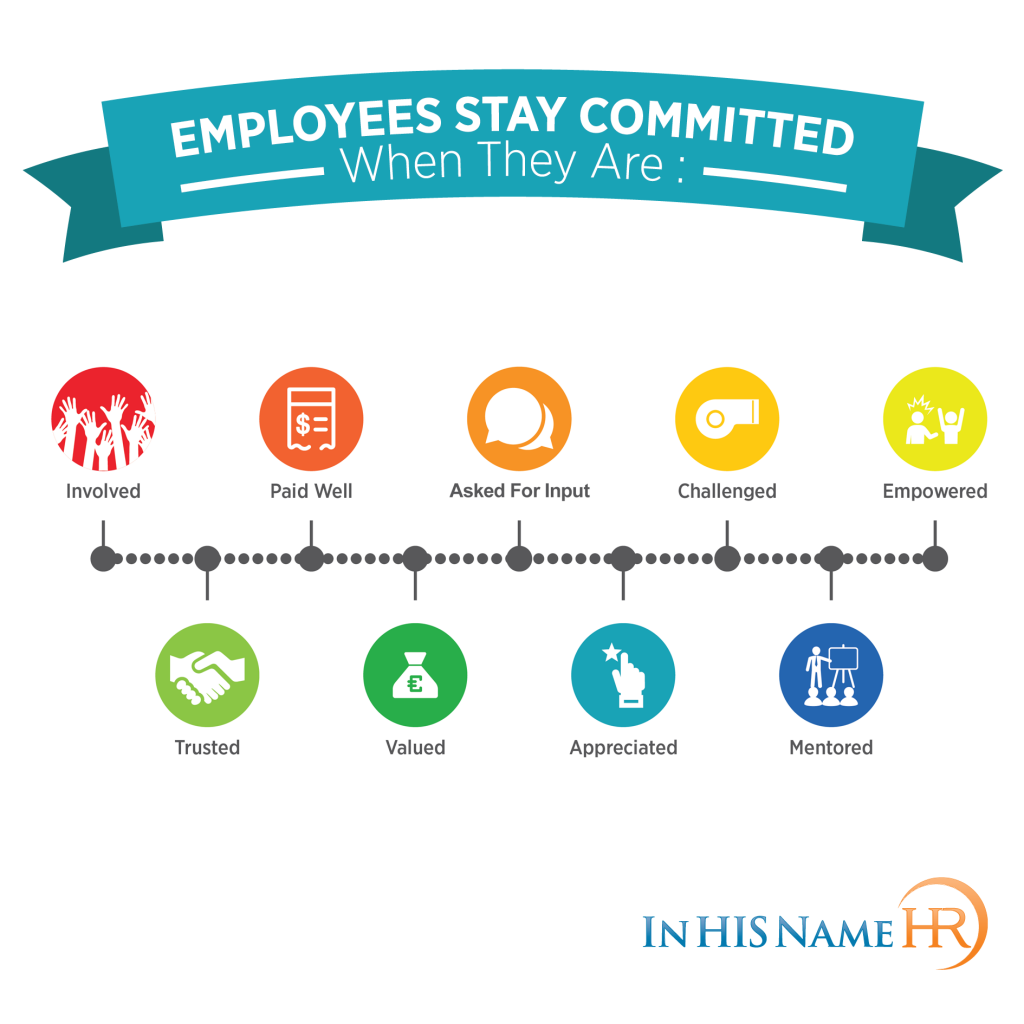Are Your Employees Asked For Input? Employee Commitment Series

This blog series focuses on nine areas that keep employees committed to your organization. In our opinion, employees stay committed when they are Involved, Paid Well, Asked for Input, Challenged, Empowered, Trusted, Valued, Appreciated, and Mentored.
Do You Ask Your Employees for Input?
No individual can competently run an organization singlehandedly. And when more than one person is involved in running it, someone needs to be in charge of decision making.
If you happen to be the leader at your place of work, that responsibility largely falls on you. But the fact that you call the shots doesn’t mean the opinions of others don’t count. Your employees have their own opinions, but the question is, how often do you ask them for input?
Why Is Employee Input Important?
Leadership consultants tell us that organizations should announce that they welcome feedback from employees. They should go a step further and actively solicit this input. Employees often have strong opinions but tend to keep them private for fear of offending management or speaking out of turn.
Yet, constructive criticism from employees can improve productivity. As a manager, it’s imperative to ask for and value the opinion of your team members. Employees view issues from a different perspective. And even if you don’t agree with them, a fresh perspective is always welcome.
The results of a survey conducted by the Zenker Folkman firm suggests there is a direct connection between soliciting input and leadership effectiveness. However, a leader doesn’t simply become better by asking for feedback. The correlation stems from the fact that seeking input from employees means a leader is making conscious efforts to get better. And the leaders that get better are those who constantly work to improve their leadership methods and skills. In fact, arguably one of the worst actions an employer can take is to solicit feedback and then ignore it.
How to Go About It
There are many methods to request input from employees. Below are some of the most important or common ones.
Employee-Led Reviews
It’s important to conduct periodic reviews in order to monitor progress. This will help you devise new strategies to reach organizational goals. Although annual performance reviews are already a major part of the culture of many organizations, there are numerous questions that surround their relevance and effectiveness. These questions tend to stem from the approach rather than the process itself. If done right, annual reviews are a great tool through which an employer can gather employee input throughout an organization.
We find that the best review process is one that is led by employees. Have the employee set up the meetings, set goals and objectives, and develop their own career development. When done correctly, and with HR and leadership review, you can move the organization to much higher levels of performance.
Leadership 360° Feedback
A 360-degree feedback system is a method of gathering opinions about the performance of an employee from people connected with the organization.
The process usually involves a complex web of information. Opinions are gathered from virtually everyone in or close to the organization. While this tool can be used to gather information about anybody within the organization, a leader seeking input from employees can use it effectively for this purpose. The most important aspect of a 360° program is confidentiality. One of the best ways to ensure confidentiality is to hire a firm to keep this information protected. Learn more about how In HIS Name HR helps organizations ensure a confidential processhere.
Morale Climate Surveys
These surveys measure the satisfaction of employees with their work environment and the leadership of the organization. They serve as a great way through which employees can provide input on aspects of the organization they are not pleased with.
Start Asking for Employee Input Today!
As a manager or a human resource professional, it’s important to create an enabling environment. This way, employees can provide their input with confidence. But it’s not enough to simply create this environment or ask for input. Organizations should value the input of employees by listening to their suggestions.
Getting what you think is ridiculous advice? Have a talk with the employee. Clarify what is being communicated. When you listen first, and then explain your perspective and organizational goals, it gets employees thinking on track over time in terms of viable suggestions.
Most importantly, implement changes when you get great advice.

_________________________________
In HIS Name HR helps organizations build high-performance Human Resources programs. Visit them at In HIS Name HR.
Mark A. Griffin is the founder and chief consultant of In HIS Name HR LLC. Connect with him on LinkedIn or Twitter.
Receive Blog Updates
|
|
Thank you for Signing Up |




